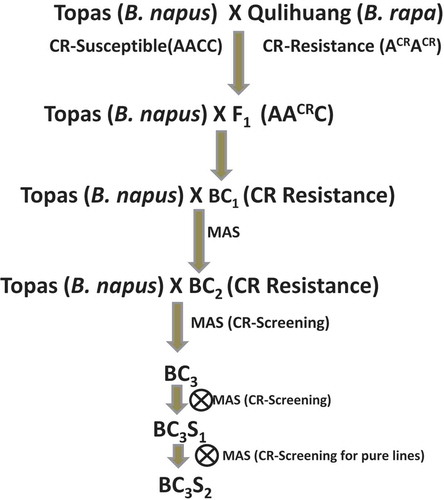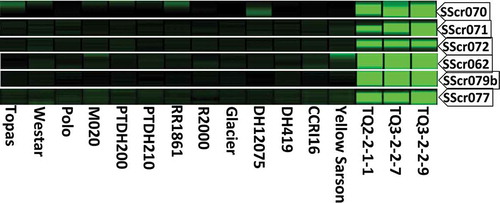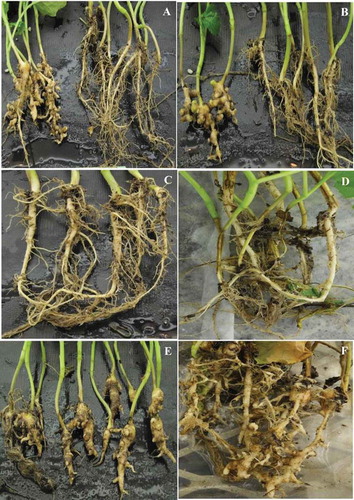Figures & data
Fig. 1 (Colour online) Schematic diagram of interspecific backcross breeding strategy to introgress clubroot resistance gene from Brassica rapa (Chinese cabbage) to Brassica napus (canola).

Table 1. Sequence information for simple sequence repeats (SSR) markers used in marker-assisted selection to transfer clubroot resistance from Brassica rapa to Brassica napus.
Table 2. Chinese cabbage (Brassica rapa) hybrid cultivars and canola (Brassica napus) cultivar ‘Topas’ evaluated for clubroot disease reaction by inoculation with a Canadian field population of P. brassicae under controlled environmental conditions.
Table 3. Evaluation of clubroot reaction phenotypes in BC3 and in BC3S2 homozygous individuals selected using marker-assisted selection in a Brassica rapa cross between Qulihuang × Yellow Sarson.
Table 4. Analysis of molecular markers for clubroot resistance gene introgression in canola using marker-assisted selection in a cross between the clubroot resistant Brassica rapa cv. Qulihuang and the susceptible B. napus cv. Topas. The BC1, BC2, BC3 and BC3S1 populations developed using ‘Topas’ as the recurrent parent and screened using a set of SSR markers linked with a clubroot resistance allele.
Fig. 2 (Colour online) Reliability of the SSR markers based on dominant polymorphism between clubroot resistance alleles and susceptible alleles in canola/rapeseed quality Brassica napus and Brassica rapa cultivars and inbred lines.

Table 5. Advanced backcrossed lines (BC3S2) carrying homozygous clubroot resistance alleles selected using marker-assisted selection evaluated under field conditions in Henan, China.
Fig. 3 (Colour online) Clubroot symptoms for advanced backcross families inoculated with Plasmodiophora brassicae. (a) Segregation of clubroot susceptible and resistant plants in the BC3 family, TQ1BC3F1-1; (b) Segregation of clubroot susceptible and resistant plants in the BC3 family, TQ1BC3F1-2; (c) BC3S2 family, TQ1BC3F3-1 displayed all the plants with clubroot resistance phenotypes that carried clubroot resistance locus in a homozygous dominant state; (d) BC3S2 family, TQ1BC3F3-2 displayed all the plants with clubroot resistance phenotypes that carried homozygous dominant clubroot resistance; (e) All the plants with clubroot susceptible phenotypes that carried homozygous susceptible alleles; (f) The clubroot susceptible parent ‘Topas’ used in backcross breeding as female.

